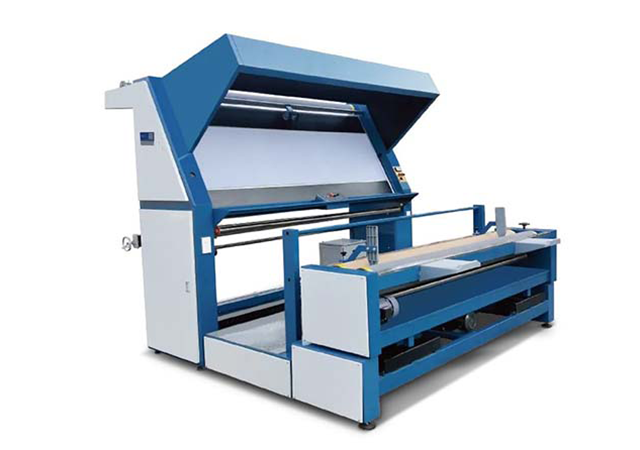Fabric plays a pivotal role in the garment manufacturing industry, accounting for nearly half of the total manufacturing expenses. This underscores the fact that the quality of fabrics directly impacts the overall quality of the final clothing products. Consequently, the presence of a reliable fabric inspection machine is indispensable in the garment production process.
During the weaving of fabrics, the inherent limitations of weaving machines can lead to numerous defects on the fabric's surface. These defects, whether in the form of weaving or knitting imperfections, necessitate meticulous inspection and correction by human eyes. As these inspection tasks pile up, they impose substantial pressure on manufacturing workers. In response to this challenge, fabric inspection machines have been developed to streamline the fabric inspection process. These machines not only enhance the efficiency of fabric winding and rolling but also reduce the burden on inspectors.
The fabric inspection machine holds tremendous importance in ensuring defect-free fabrics. It not only aids in identifying and marking defects but also plays a vital role in preventing defects during the manufacturing process and subsequently during cutting. This makes it an indispensable acquisition for garment manufacturing factories.
With the in-depth development of the textile industry, the sustainable future of the industry has become the focus of development for all parties. As an important part of the textile industry chain, how will the fabric inspection machine affect and shape the future of the sustainable textile industry?
1. Energy Efficiency
One of the primary ways to make fabric inspection machines more sustainable is by improving their energy efficiency. Traditional fabric inspection machines often consume a significant amount of electricity during operation. By adopting energy-efficient technologies such as LED lighting and advanced motor systems, these machines can reduce their carbon footprint. Manufacturers can also explore the use of renewable energy sources to power these machines, further reducing their environmental impact.
2. Materials and Design
Sustainable design principles can be applied to fabric inspection machines to minimize their environmental impact. This involves using eco-friendly materials in the construction of these machines, such as recyclable metals and non-toxic coatings. Additionally, the design should prioritize durability and longevity, reducing the need for frequent replacements and minimizing waste. Modular design concepts can allow for easier upgrades and repairs, extending the lifespan of these machines.
3. Waste Reduction
Fabric inspection machines generate waste in the form of defective fabric scraps and worn-out components. Sustainability initiatives can focus on reducing this waste. For example, implementing advanced defect identification algorithms can help identify and mark defects more accurately, reducing the amount of fabric that needs to be discarded. Moreover, manufacturers can implement recycling programs to repurpose or recycle materials from worn-out machine components.
4. Automation and Efficiency
Automation technologies play a pivotal role in sustainability efforts. Fabric inspection machines can be equipped with advanced automation features to optimize fabric inspection processes. This not only increases efficiency but also reduces the labor and energy required for manual inspections. Additionally, automation can help reduce human error, further improving the accuracy of defect identification.

5. Digitalization and Data Analysis
The integration of digitalization and data analysis can enhance sustainability in fabric inspection. By collecting and analyzing data on fabric defects, manufacturers can identify trends and patterns, allowing them to take proactive measures to prevent defects at the source, such as optimizing weaving processes or yarn selection. This data-driven approach can significantly reduce fabric waste and improve overall sustainability.
6. Remote Monitoring and Maintenance
To reduce the environmental impact associated with travel and onsite maintenance, fabric inspection machines can be equipped with remote monitoring and diagnostics capabilities. This allows technicians to diagnose and resolve issues without the need for physical presence, minimizing travel-related emissions and downtime.
7. Lifecycle Assessment
Sustainability initiatives should also consider the entire lifecycle of fabric inspection machines, from manufacturing to disposal. Conducting a comprehensive lifecycle assessment can help identify areas where environmental improvements can be made at each stage of the machine's life. This includes responsible disposal or recycling options for machines that have reached the end of their useful life.
In conclusion, fabric inspection machines are essential tools in the textile industry, and sustainability initiatives can significantly shape their future. By focusing on energy efficiency, materials, waste reduction, automation, data analysis, remote monitoring, and a holistic lifecycle approach, fabric inspection machines can become more environmentally friendly and contribute to reducing the ecological footprint of the textile industry as a whole. Manufacturers, designers, and industry stakeholders must work together to drive these sustainability efforts and ensure a more sustainable future for fabric inspection machines.




